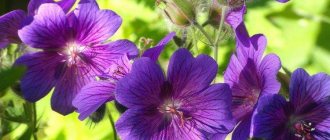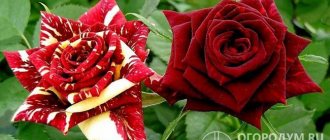Eschscholzia belongs to the Poppy family, which includes several dozen different species. This plant was first found in North America, in its western part.
Its color resembles gold, which is why the Spaniards jokingly call Eschscholzia the golden cup. The plant is very beautiful and romantic, but does not require special care and is becoming increasingly popular in cultural cultivation.
Eschsolzia: varieties and varieties
Eschscholzia belongs to the Papaveraceae (poppy) family, which includes up to 10 species of annual and perennial plants. Often perennial varieties in Russian conditions are grown as annuals. The natural habitat of Eschscholzia is North America.
California poppy is a beautiful plant that can increasingly be seen in flower beds.
The height of Eschscholzia reaches a maximum of 0.5 m, while the plant has a pronounced central stem topped with flowers. The leaves are complexly dissected, bluish in color, with a waxy coating - partly reminiscent of steppe wormwood.
California poppy blooms with single simple or double flowers, the diameter of which reaches 7 cm. Eschscholzia opens its flowers only in bright sun. In cloudy weather, the bright petals fall off very quickly. The variety of colors of Eschscholzia flowers is amazing, repeating the incredible combinations of the yellow-orange spectrum. There are varieties with white and pink flowers.
Recently, breeders have developed hybrid varieties of plants with contrasting strokes and stripes on the petals for growing in open ground. Flowering lasts from June to October.
Eschscholzia turf
- Eschscholzia turf (E. caespitosa) - the plant reaches only 15 cm in height. Small bright yellow flowers with a diameter of up to 3 cm. Low-growing bushes with feathery foliage and bright flowers are very decorative.
- Eschscholzia Lobba (E. lobbi) is a low plant, reaching a height of only 18 cm. Light yellow flowers up to 2 cm in diameter. Growing this variety in mixed mixborders and flowerbeds in open ground allows you to perfectly shade viola or lobelia in blue and blue-violet tones. Planting low-growing varieties of eschscholzia with silver leaves in the rock garden helps to diversify the monotonous greenery.
Eschsolzia Lobba
Reviews from gardeners
Medinilla, Russia, Kostroma
This flower is very beautiful and the foliage is like a carrot, only matte silver in color. My first experience was bright yellow Eschscholzia.
Source: otzovik.com
Che! Russia, Yekaterinburg
Esholtia takes root quite hard using the seedling method - the seedlings, although with difficulty, take root, but do not begin to bloom for a very long time.
Source: otzovik.com
Planting eschsolzia
It is necessary to plant the crop in open ground in the brightest sunny place. It is impossible to plant California poppy in wet, caked and soured soil. It is necessary to add a sufficient amount of quartz sand to the soil for planting. If the groundwater level is high, it is necessary to perform preliminary drainage in the beds where it is planned to plant Eschscholzia plantings.
Advice! When planting eschscholzia, do not use nitrogen fertilizers.
Plants do not tolerate transplantation well, so it is easier to sow the crop in a permanent place with seeds in the spring. Despite the fact that eschscholzia is a perennial plant, it does not tolerate cold winters. Temperatures below -5C have a detrimental effect on wintering plants. That is why the crop is grown as an annual.
Sunny California poppy loves open areas
Eschscholzia, sown with seeds in the spring, will fully bloom in June. It is allowed to sow California poppy seeds in the fall. Pre-winter sowing of Eschscholzia seeds allows you to obtain strong, hardened seedlings of the flower crop in early spring.
Obtaining seedlings
To obtain beautiful Eschscholzia flowers in a flowerbed, as in the photo, you can grow seedlings for further planting in open ground. This method is very effective if you want to decorate a flower bed according to a given color scheme.
Before planting, seeds must undergo stratification. To do this, you will need a box with wet sand or peat. Seeds are placed in it and sent to a cold place, where the air temperature ranges from +1 to +5 degrees. To obtain good results, the seed is pre-soaked in water. In addition, experienced gardeners recommend soaking the seeds in a solution of potassium permanganate, as well as dusting them with fungicides. To improve the quality and quantity of seedlings, seeds should be treated with growth stimulants.
Planting an eschscholzia flower (photos are given in the article) is very convenient to do using peat tablets. The fact is that the plant has a very fragile root, which is easily damaged during transplantation, which can lead to a lack of flowers on the bush. To avoid such problems, it is very convenient to use peat tablets. They are placed in a container with water to swell. Afterwards, two seeds are placed in each tablet. The top of the recesses is covered with soil. Peat pots are placed in a dry container, which is covered with glass or film on top. The box is placed in a well-lit place. The air temperature should not exceed +20 degrees. In the future, the greenhouse must be periodically ventilated, and the crops must be moistened using a sprayer. This is what care is all about. The photos of Eschsolzia in our article will certainly attract your attention to the culture. Without hesitation, purchase seeds and plant them on your site. Caring for the crop is so simple that it will not be difficult even for an inexperienced person.
The first shoots after sowing will delight you in two weeks. After they appear, you can remove the shelter. The container with the plants is moved to a brighter place. After two weeks, you can try to make the first fertilizing using liquid mineral fertilizer. When preparing a solution, it is worth halving its concentration compared to the proportions indicated on the package. You can plant seedlings in a flowerbed in May, since the crop is not afraid of frost. However, before planting, the plants must be hardened off, because only then will they be able to withstand temperatures dropping to -5 degrees.
Plant care
Eschscholzia: planting and care - the culture does not require constant care. If you provide regular but gentle watering and a sunny location, the plant will delight you with flowering all the warm months of the year. Caring for Eschscholzia seedlings includes mulching and loosening the soil between young seedlings. Caring for the crop is not difficult, even a completely inexperienced gardener can do it.
For better health of the crop, you need to loosen the soil under it more often
Bloom
Eschscholzia is distinguished by its abundant flowering. The lifespan of one flower is three to four days. But at the same time, an incredible number of buds are formed on each bush, which bloom one after another. The flowering of the crop begins with the arrival of stable warmth and continues until the cold weather. The duration of flowering largely depends on weather conditions. Sometimes it happens that the plant blooms after the bolls have dried out. Warm autumn promotes re-blooming. A special feature of the culture is that it blooms only in sunny weather. In bright light, Eschscholzia instantly opens its buds, delighting its owners with bright colors.
Ease of care and external beauty have made the culture incredibly popular among flower growers and landscape designers.
Diseases and pests
In hot, dry summers, spider mites can settle on the plant. This pest can quickly ruin the appearance of the crop and even destroy Eschscholzia. Pest control measures include spraying infected plants with systemic anti-mite preparations. The treatment should be repeated after 7-10 days, when new offspring of ticks hatch from the eggs.
Ticks attach to the bottom of leaves, so be sure to spray with medications under the leaves of plants.
In addition to spider mites, the bean aphid is a pest of Eschscholzia; special anti-aphid preparations will help destroy the pests.
Spider mite
Overwatering the soil can cause Eschscholzia roots to rot. Damaged plants should be removed from beds and flower beds.
Problems during cultivation
Eschscholzia can suffer from various diseases and parasites. The sooner you start fighting them, the less the plant will suffer.
Pests
Bean aphids and spider mites sometimes settle on eschscholzia leaves. Insecticides help defeat them.
Diseases
The most common problems when growing Eschscholzia:
- rot. Appears with excessive moisture. It is necessary to get rid of the affected parts of the plant and review the watering regime;
- powdery mildew. The flower is also affected by high humidity and excess nitrogen in the soil. Weakened immunity reduces resistance to disease. A light fluffy coating appears on the leaves, which gradually darkens. Lack of treatment can lead to the death of the plant.
Signs of improper care
The following symptoms indicate a bush disease:
- eschscholzia stops blooming or the buds do not open even in sunny weather;
- the leaves turn yellow, their tips dry out;
- plaque or spots appear on the leaf blades.
Note! Affected leaves should always be removed. If the bush is completely affected, it is better to dig it up and burn it to protect other plants.
It is necessary to find out as soon as possible why the Eschscholzia is losing its decorative properties in order to take action and save it.
Eschscholzia: combination with other plants
California poppy is an ideal plant for a Moorish lawn. The plant goes well with lawn grasses, clover, cornflowers, flax, cloves and other crops that make up the lawn carpet.
On the alpine hills, Eschscholzia complements compositions of flowering plants. Eschscholzia looks especially decorative with low-growing annuals: iberis, lobelia, purslane.
Eschsolzia in landscape design
The plant is ideal for decorating flower beds and garden beds.
Collecting seeds
Since in our latitudes Eschscholzia is grown as an annual crop, the issue of collecting seeds is always relevant. If you like your plants in your flowerbed, then you should prepare your own seed material for next year.
To obtain seeds and prevent self-seeding, experts recommend putting gauze bags on the largest flowers after flowering. In this form, the plants must wait for the seeds to ripen for a month. Afterwards, the seed pods along with the bags are cut off. The fruits are removed and dried. Subsequently, the seeds are stored in paper bags. They remain viable for three years. If you are not afraid of chaotic plantings of flowers, you do not have to interfere with self-sowing. Even digging up the soil will not prevent new plants from sprouting in the spring.











